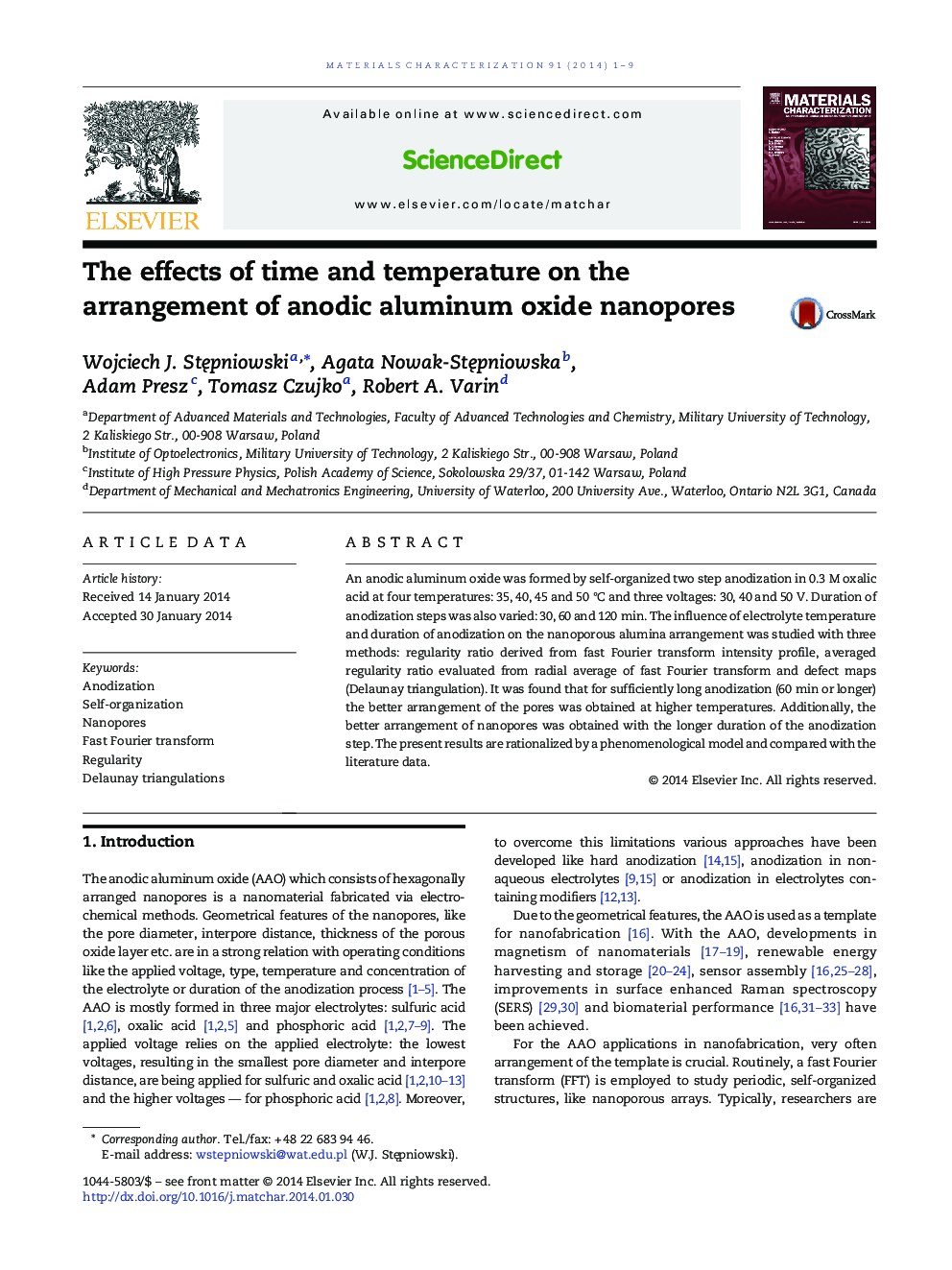| Article ID | Journal | Published Year | Pages | File Type |
|---|---|---|---|---|
| 7970822 | Materials Characterization | 2014 | 9 Pages |
Abstract
An anodic aluminum oxide was formed by self-organized two step anodization in 0.3 M oxalic acid at four temperatures: 35, 40, 45 and 50 °C and three voltages: 30, 40 and 50 V. Duration of anodization steps was also varied: 30, 60 and 120 min. The influence of electrolyte temperature and duration of anodization on the nanoporous alumina arrangement was studied with three methods: regularity ratio derived from fast Fourier transform intensity profile, averaged regularity ratio evaluated from radial average of fast Fourier transform and defect maps (Delaunay triangulation). It was found that for sufficiently long anodization (60 min or longer) the better arrangement of the pores was obtained at higher temperatures. Additionally, the better arrangement of nanopores was obtained with the longer duration of the anodization step. The present results are rationalized by a phenomenological model and compared with the literature data.
Keywords
Related Topics
Physical Sciences and Engineering
Materials Science
Materials Science (General)
Authors
Wojciech J. StÄpniowski, Agata Nowak-StÄpniowska, Adam Presz, Tomasz Czujko, Robert A. Varin,
